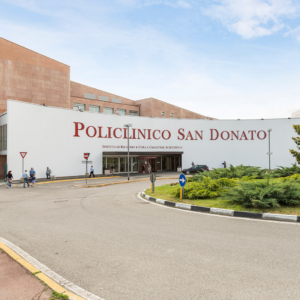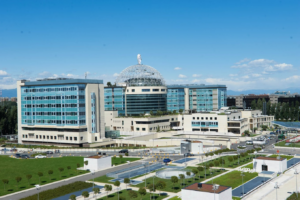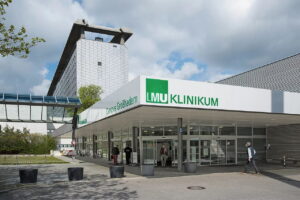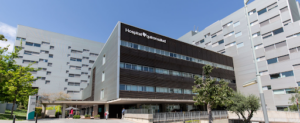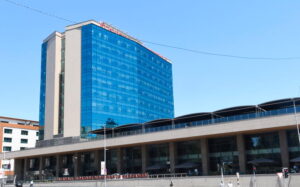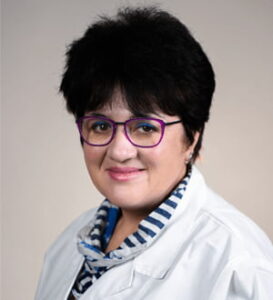Pediatric oncology
Pediatric oncology is a specialized field of medicine focused on the diagnosis and treatment of malignant tumors in children and teens. Although cancer in children is significantly less common than in adults, this group of diseases requires a distinct approach due to the specifics of the developing body. The treatment of pediatric oncological diseases aims not only at combating tumors but also at preserving the child’s quality of life, taking into account their physiological and psychological development.
Differences between pediatric and adult oncology
Pediatric oncology differs significantly from adult oncology in several key aspects. Firstly, the nature and types of tumors that occur in children are noticeably different from those diagnosed in adults. Children are more likely to develop tumors associated with embryonic developmental disorders, such as neuroblastoma or nephroblastoma (Wilms tumor). In contrast to adults, in whom epithelial tumors (such as lung or gastric cancer) predominate, pediatric cancers are more often associated with the hematopoietic system (leukemias) or the central nervous system.
Another important difference is the rate of disease progression. Pediatric tumors generally grow more rapidly that is why urgent intervention and more intensive therapy is needed. However, children’s bodies have a greater capacity for regeneration, allowing for the use of more aggressive treatment methods and increasing the chances of a complete recovery.
Most common pediatric cancers
Pediatric oncology covers a wide range of malignant diseases, but the most common include:
Leukemias (blood cancer). This is the most common group of malignant diseases in children, affecting the bone marrow and lymphatic system. Acute lymphoblastic leukemia (ALL) is the most prevalent form.
Brain and spinal cord tumors. The most frequent central nervous system tumors include medulloblastoma and astrocytoma. These tumors can cause a variety of neurological symptoms depending on their location.
Neuroblastoma. A tumor arising from immature nerve cells, most often located in the retroperitoneal space, though it may metastasize to other organs.
Nephroblastoma (Wilms tumor). A malignant kidney tumor most commonly diagnosed in younger children.
Lymphomas, or cancers of the lymphatic system. These include Hodgkin lymphoma and non-Hodgkin lymphomas. Pediatric lymphomas may affect various organs and systems.
Sarcomas. Bone cancer (osteosarcoma) and soft tissue cancer (rhabdomyosarcoma) most frequently affect children and teens. These tumors are highly aggressive and require a comprehensive treatment approach.
When one should consult an international pediatric oncologist?
Rare and complex cancers: if a child is diagnosed with an aggressive form of cancer, such as neuroblastoma, rhabdomyosarcoma, or Wilms tumor, that requires a highly specialized approach available only at leading international medical centers.
Treatment resistance: when standard treatments fail to achieve the desired result, consultation with a specialist may be necessary to explore alternative or modern therapies.
Need for a second opinion: to confirm the diagnosis or review the proposed treatment plan.
Clinical trials: if a child has a rare or difficult-to-treat cancer, participation in international clinical trials offering access to experimental medications and innovative treatment methods may provide hope for recovery.
Where to seek qualified assistance?
| Countries | United States | Germany | Spain | Israel |
|---|---|---|---|---|
| Diseases | Leukemia Neuroblastoma | Brain and spinal cord tumors Sarcomas | Brain tumors | Nephroblastoma and other types of embryonal tumors |
Innovative treatments in pediatric oncology
Global leaders in pediatric oncology are actively developing and implementing innovative treatments aimed at improving the efficacy of therapy and minimizing side effects. Advanced treatment approaches include:
Immunotherapy: In recent years, immunotherapy has become a revolutionary method in treatment of pediatric tumors. Medicaments such as immune checkpoint inhibitors and CAR T-cell therapy aim to activate the child’s immune system to fight cancer cells. This approach is particularly effective in cases of relapse or when traditional treatments are insufficient.
Genomic and molecular-targeted therapy: This approach allows for personalized treatment based on the tumor’s genetic profile. Leading clinics around the world actively use targeted therapies that act on specific mutations in cancer cells while minimizing effects on healthy tissues.
Proton therapy: This type of radiation therapy is one of the most promising methods for treating tumors in children. Proton therapy allows for precise targeting of radiation at the tumor site, reducing the risk of damage to surrounding tissues and organs. This is especially important in treating brain and spinal cord tumors.
Minimally invasive surgical techniques: Modern robotic systems and laparoscopic surgical methods enable operations with minimal incisions, reducing recovery time and minimizing the risk of complications.
Stem cell therapy: In certain cases, particularly in the treatment of leukemia, stem cell transplantation is used. This method helps to restore hematopoiesis following high-dose chemotherapy and increases the chance of recovery.
Hospitality Medservice is your trusted partner in finding the best clinic worldwide. Our website features only authoritative medical institutions equipped with modern facilities and the latest treatment protocols. Compare clinic ratings and treatment costs, learn about the specialists and contact us for assistance in:
- arranging medical trips
- scheduling in-person consultations
- organizing video consultations
- obtaining a “second opinion”
Submit a request on our website, and one of our medical coordinators will contact you promptly.







